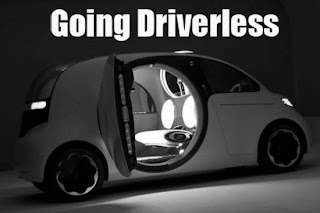
Image Source: http://www.futuristspeaker.com/wp-content/uploads/Driverless-Car-Concept-18.jpg
The world of motoring and transportation has been changed forever with the emergence of technology that would make autonomous driving a reality. In just a matter of years, driverless cars may be roaming around on the major thoroughfares in the United States.
Such technology would help address the issue of accidents on the road. In fact, this could save thousands of lives on an annual basis. To begin with, human error accounts for about 90 percent of fatal car crashes in the United States.
The slow yet steady development of driverless cars also comes with the needed legislation on both federal and state levels that would incorporate these vehicles into the road. In fact, a few states have adopted laws that would determine the needed safety and performance regulations that would allow driverless cars to be tested and later on be operated on their state roads and highways. The first one was the State of Nevada, followed by California, which happened a few months ago last year.
Despite the promise of this new advancement in both technology and transportation, there are certain issues that need to be addressed, especially with regard to the legal issues. One of them is liability in a car crash. Simply put, who’s to blame when a driverless car crashes into a motorist or to a property?
Legal experts such as Los Angeles personal injury attorneys know that accidents on the road—collisions, hit-and-runs, damage to property—are often caused by negligence. When this happens and the plaintiff who was injured in the crash filed a claim against the liable party, the latter may be forced to pay compensation for the damages suffered of the former.
As it is, there’s always a legal risk when accidents occur on driverless cars, and the automobile industry players are aware of it. For Dan Gage of the Alliance of Automobile Manufacturers, they “have great exposure as an industry in terms of product liability.” He also went to say that “most of us (automakers) suspect that there will always be someone in that driver’s seat.”
Such technology would help address the issue of accidents on the road. In fact, this could save thousands of lives on an annual basis. To begin with, human error accounts for about 90 percent of fatal car crashes in the United States.
The slow yet steady development of driverless cars also comes with the needed legislation on both federal and state levels that would incorporate these vehicles into the road. In fact, a few states have adopted laws that would determine the needed safety and performance regulations that would allow driverless cars to be tested and later on be operated on their state roads and highways. The first one was the State of Nevada, followed by California, which happened a few months ago last year.
Despite the promise of this new advancement in both technology and transportation, there are certain issues that need to be addressed, especially with regard to the legal issues. One of them is liability in a car crash. Simply put, who’s to blame when a driverless car crashes into a motorist or to a property?
Legal experts such as Los Angeles personal injury attorneys know that accidents on the road—collisions, hit-and-runs, damage to property—are often caused by negligence. When this happens and the plaintiff who was injured in the crash filed a claim against the liable party, the latter may be forced to pay compensation for the damages suffered of the former.
As it is, there’s always a legal risk when accidents occur on driverless cars, and the automobile industry players are aware of it. For Dan Gage of the Alliance of Automobile Manufacturers, they “have great exposure as an industry in terms of product liability.” He also went to say that “most of us (automakers) suspect that there will always be someone in that driver’s seat.”





















0 comments:
Post a Comment